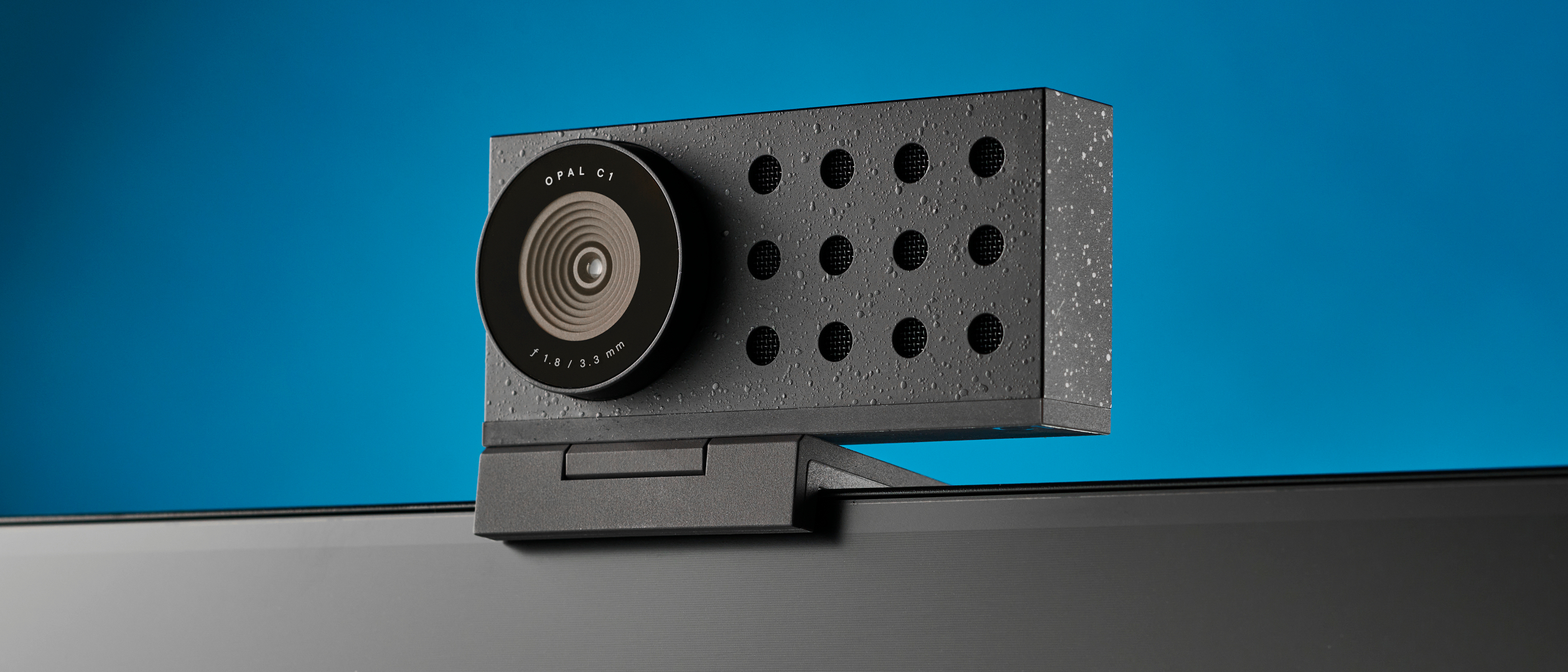Tom's Guide Verdict
Poor autofocus performance results in blurry images, which shouldn’t be happening on a $299 webcam. This spoils lovely 4K image quality and a fantastic companion app. What’s the point in 4K if you’re going to be blurry half the time?
Pros
- +
Lovely 4K image
- +
Decent mic
- +
Awesome companion app
- +
Sleek design
Cons
- -
Expensive
- -
AF very poor
- -
Subpar Windows experience
- -
Loose mounting
Why you can trust Tom's Guide
Price: $299/£238
Max resolution: 4K
Focus type: PDAF w/ detection
Microphone: Built-in directional
Size: 1.4 x 3.07 x 0.94 inches
Weight: 3.5 ounces
Mounting: ⅜” thread & adaptable screw-in mount
Colors: White; Black
On paper, the Opal C1 has what it takes to mix it with the best webcams out there. It offers lovely 4K image quality, a decent-enough microphone, prepossessing looks and solid companion software.
Let me pose you a question, though: what’s the point of 4K if you still look blurry during a video call? In testing, the C1 was unable to reliably hold focus on my face, meaning I spent the majority of a very important call — an interview — completely out of focus. I might as well have conducted the assessment via semaphore. Such tribulations completely undermine any of the C1s positive attributes.
This webcam also costs $299 — a steep price even if it weren’t suffering from astigmatism. For this amount of cash, the inability to render one’s face in even moderate sharpness is an unacceptable flaw… especially in a product marketed as a “professional webcam” with “DSLR quality”.
If you hadn’t guessed already, despite some promising features, it’s difficult to recommend this cam. Find out more in our Opal C1 review.
Opal C1 review: Cheat sheet
What is it? A 4K webcam from Opal and elder sibling to the Opal Tadpole
How much does it cost? $299 / £238 from Opal
What are its standout features? 4K resolution, a premium design and excellent companion software
Any drawbacks? Unfortunately, yes. The C1’s AF is unreliable, making its price and macOS-only companion software difficult to stomach
Opal C1 review: The ups
The handsome Opal C1 features a 4K imaging sensor and an f/1.8 lens, delivering a sharp, bright picture. It hooks up easily (on macOS, at least) and pairs with excellent companion software.
Design
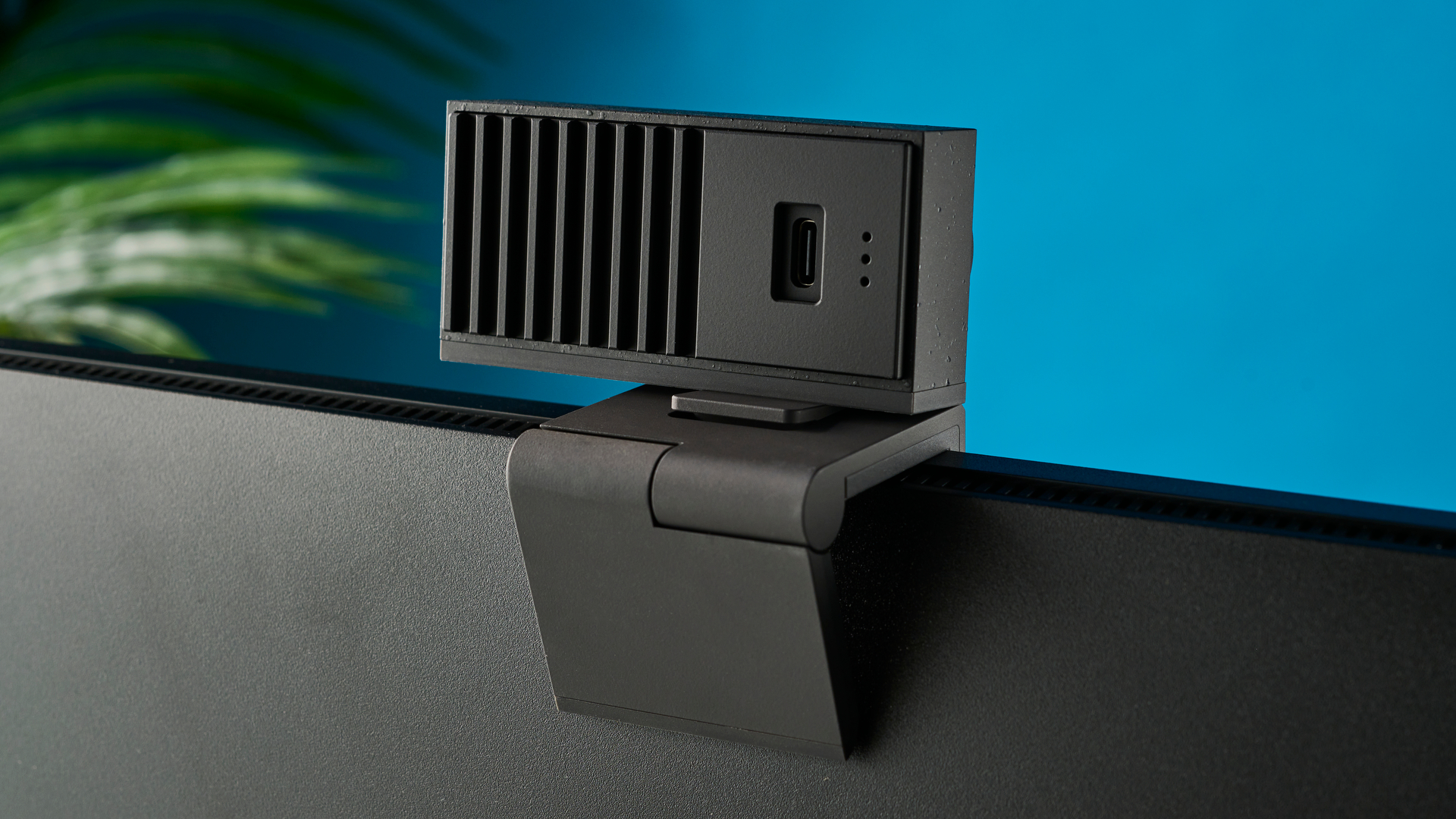
The Opal C1 looks like a piece of $299 tech should. I’m a big fan of the company’s styling, and I love the design of the Opal Tadpole I recently reviewed. The C1 looks just as good, although it has a more industrial vibe going on, with its textured metal surface, circular microphone cutouts and cooling fin ridges on the rear. I love the matte paint on both white and black colorways, too.
Interestingly, the C1 also uses less than 2% plastic in its design, so if the eco-friendliness of your webcam matters to you, Opal has you covered.
4K Video
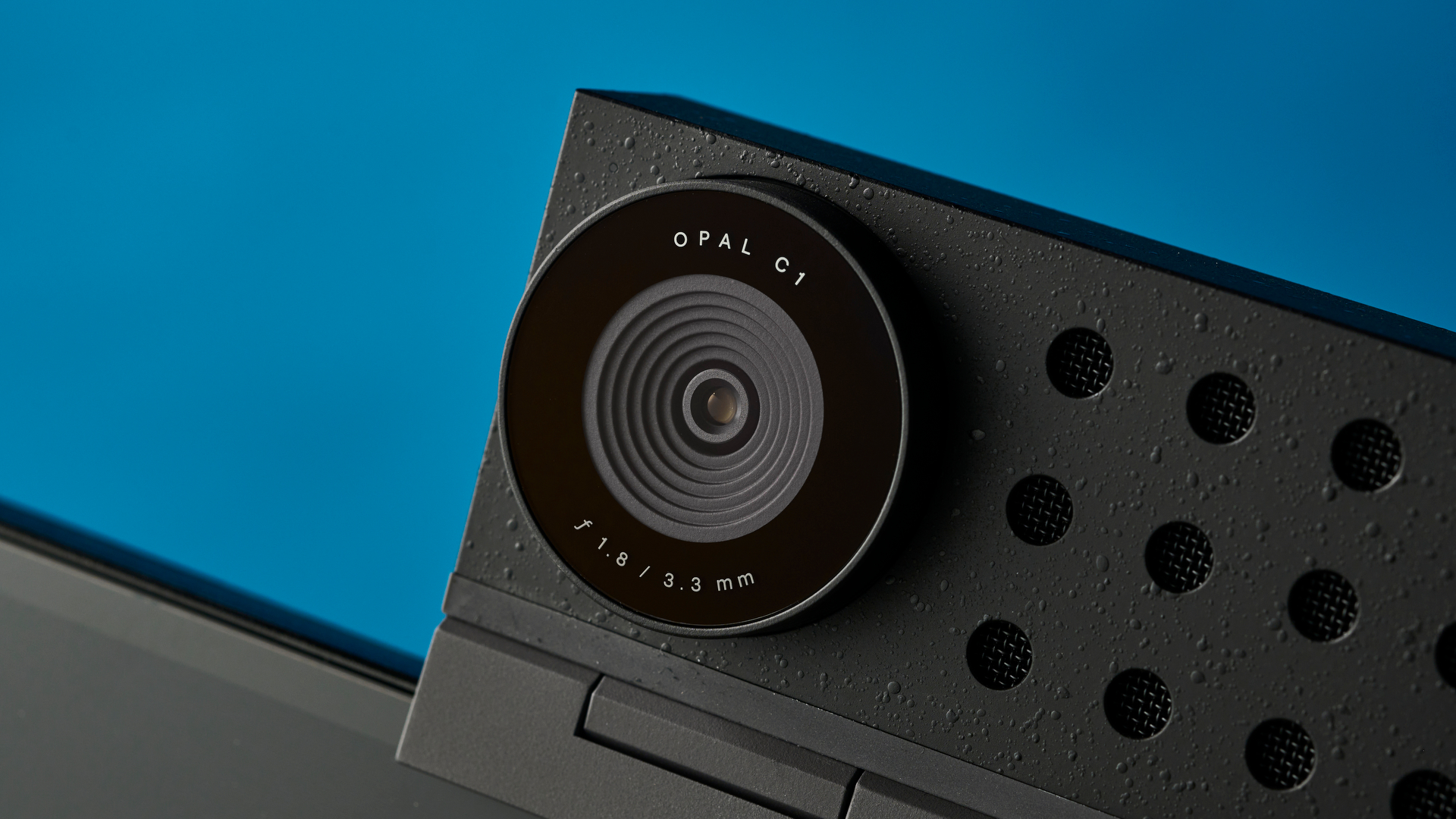
The Opal C1 utilizes a 4K Sony image sensor and an f/1.8 maximum aperture lens, which deliver a really sharp picture (when it manages to focus properly). You can see in the screenshots below just how much of a difference there is between the Opal C1’s photo (first) and my 2019 MacBook Pro’s built-in webcam. The C1’s image is much sharper than the laptop image, with my face noticeably fuzzier in the latter. Obviously, you'd expect that to be the case given the laptop uses an HD camera. However, the C1 also delivers much better contrast, and the temperature feels more natural as opposed to the MacBook Pro camera’s yellow tint.


I also appreciate the background blur on the C1, which is much smoother and better looking than the laptop camera image. By default, the C1 doesn’t deliver too shallow DoF (Depth of Field), so your image won’t look overly cinematic. However, this can be customized in the companion app, where you can make full use of the wide maximum aperture to get much tighter blur.

Low light performance isn’t awful, although I was expecting better given the camera’s wide f/1.8 maximum aperture. As you can see from the screenshot above, taken in a dimly lit room, the image looks more like my MacBook Pro’s webcam due to noise.
Audio quality
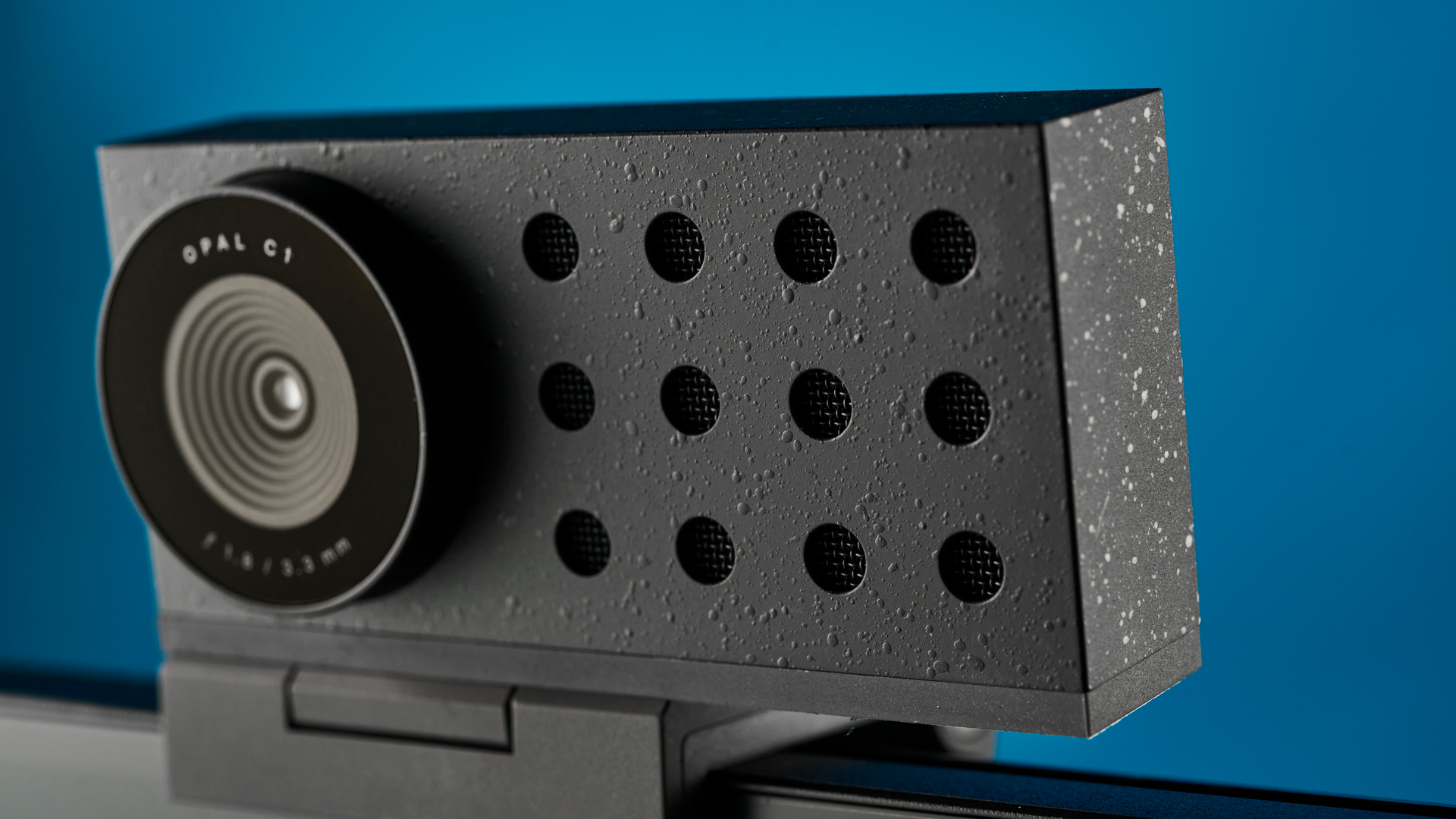
I’ve been testing the Opal C1’s microphone out on several calls, swapping between it and my laptop’s microphone without telling the recipients which one I was using. The feedback was that the Opal’s microphone was slightly louder and marginally clearer, although there’s really not much in it.
While it may not convincingly best the internal mics of today’s best laptops, the Opal’s microphone is better than many of those found in cheaper laptops. If you’re a desktop user without a mic, you could do a hell of a lot worse than the C1. If top-tier microphone quality is of paramount importance to you, though, consider the Poly Studio P5.
Connectivity
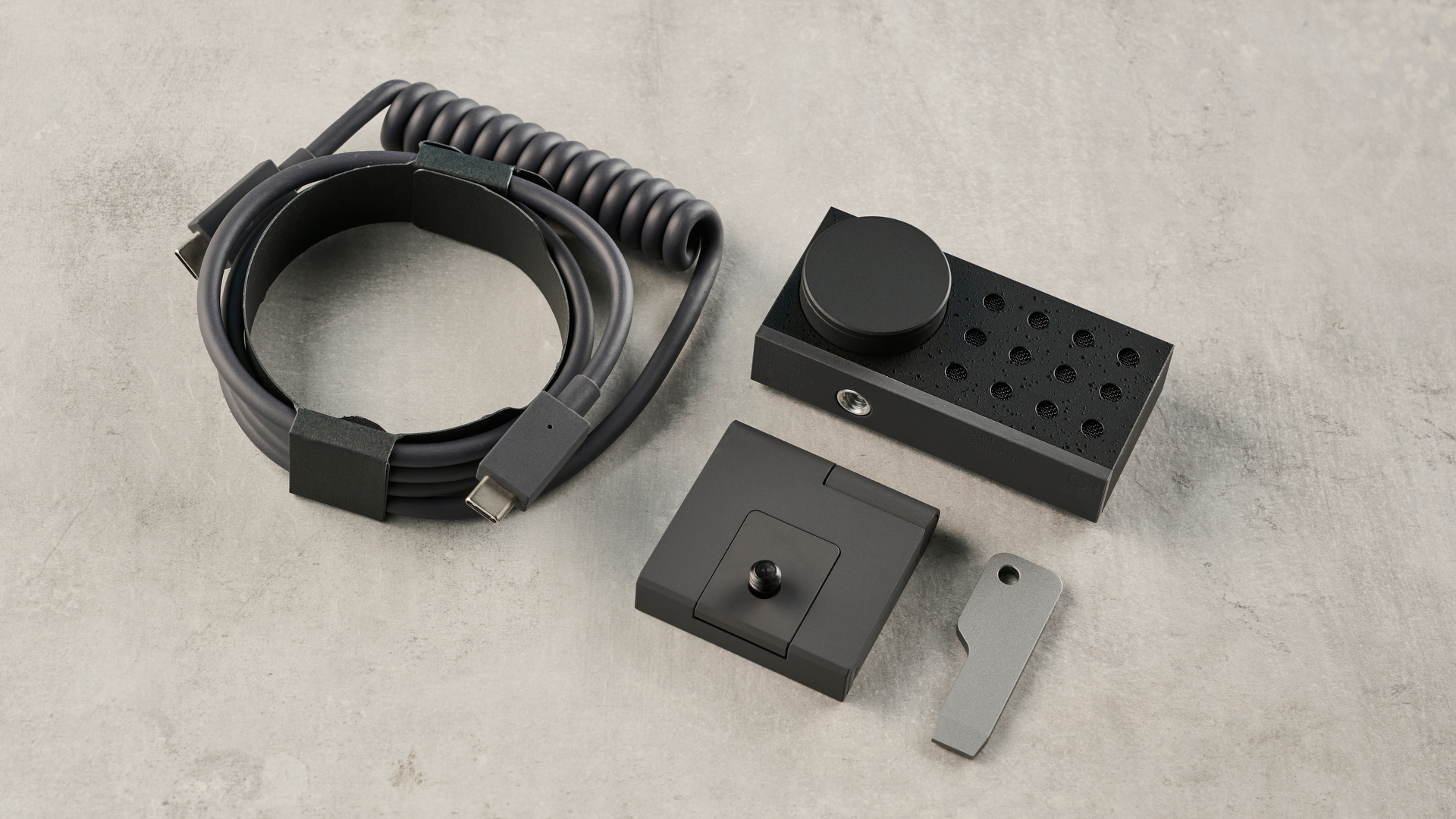
The Opal C1 is plug and play, at least on macOS. You simply hook it up via USB-C and it’s ready to go. I plugged it in, fired up Google Meet and selected the C1 for my video and microphone. It’s an incredibly simple process.
It’s worth noting, though, that the startup docs from Opal included in the box recommend you download the Composer software straight away to update the webcam’s firmware. I’ll come back to that software a little later.
On Windows, Meet struggles to pick up both the webcam and mic to begin with, but after a simple unplug and unplay / replug and replay, I found myself back in business. Windows doesn’t recognize the microphone properly though, not listing it as Opal and instead giving it a generic microphone device name. There is also a clear input delay on the microphone.
Unfortunately, it isn’t possible to download the Opal Composer software on Windows, and in general, the webcam seems very un-Windows-friendly, or at least unoptimized (as evidenced by our connection issues). I will come back to this a little later, too.
Composer app

If you’re a macOS user, you’ll have access to the Opal Composer app, which is excellent. It allows you to update the webcam’s firmware and also gives you access to lots of customization options — including filters, exposure settings and background blur. There's also a face tracking mode where the camera will pan and follow your face as you move across frame. I really enjoy playing around with the Composer app to tailor my picture as I like.
Opal C1 review: The downs
Unfortunately, for all its pros, the Opal C1’s autofocus is very poor, struggling to keep faces in focus for sustained periods. If you’re a Windows user, you’ll also want to steer clear of the C1 — the webcam itself functions much more smoothly on macOS, while the Composer software is not available on Windows.
Autofocus

The standout issue with the Opal C1 is its autofocus, which is about as effective as spitting to douse a house fire. The first time I used the C1 was while conducting an interview, and while in hindsight this was inadvisable, in my defense I had no AF or connectivity issues with Opal’s Tadpole, so wasn’t expecting a rough time from the C1. I spent almost the entirety of the interview completely out of focus, which was rather embarrassing, although my technical foibles served as a good ice breaker.
You can see in the screenshot above just how blurry I was with our first test camera (after firmware updates), and how the camera has focused on the background, highlighted in green.
At this point in testing, the C1 was hooked up to my work laptop, which can’t be used to download third party software, meaning I was unable to update firmware via the Composer app. Giving the C1 the benefit of the doubt by assuming firmware was the problem, I hooked it up to my personal MacBook to update it, only to have the same issues on every video call I joined.

I then assumed the issue could be a hardware fault with our review unit. Thankfully, Opal supplied us with two units, but our backup unfortunately produces the same problem. On our second unit, the issue is slightly better, so while the AF still struggles to detect my face (meaning I’m regularly out of focus), I don’t appear quite as blurry as before. The screenshot above is using our second review unit — the background is in focus, highlighted in green.
At the end of a 20 minute call with a colleague, he asked why my camera had been focused on someone sitting 10 feet behind me.

In low light, our second camera struggled a lot, with the image often being very blurry, as you can see from the screenshot above.
That’s two benefits of two doubts that the C1 has had off me, and it isn’t receiving any more.
Price
While premium 4K webcams are usually expensive, the AF malarky above makes the C1’s steep price a bitter pill to swallow. $299 is a lot to spend to not even be able to see yourself clearly.
Regardless of the AF issues, the C1 is an expensive product to begin with. The Logitech MX Brio 4K, for example, which is our favorite premium webcam, is $100 less at $199 (and it actually works properly).
Mount
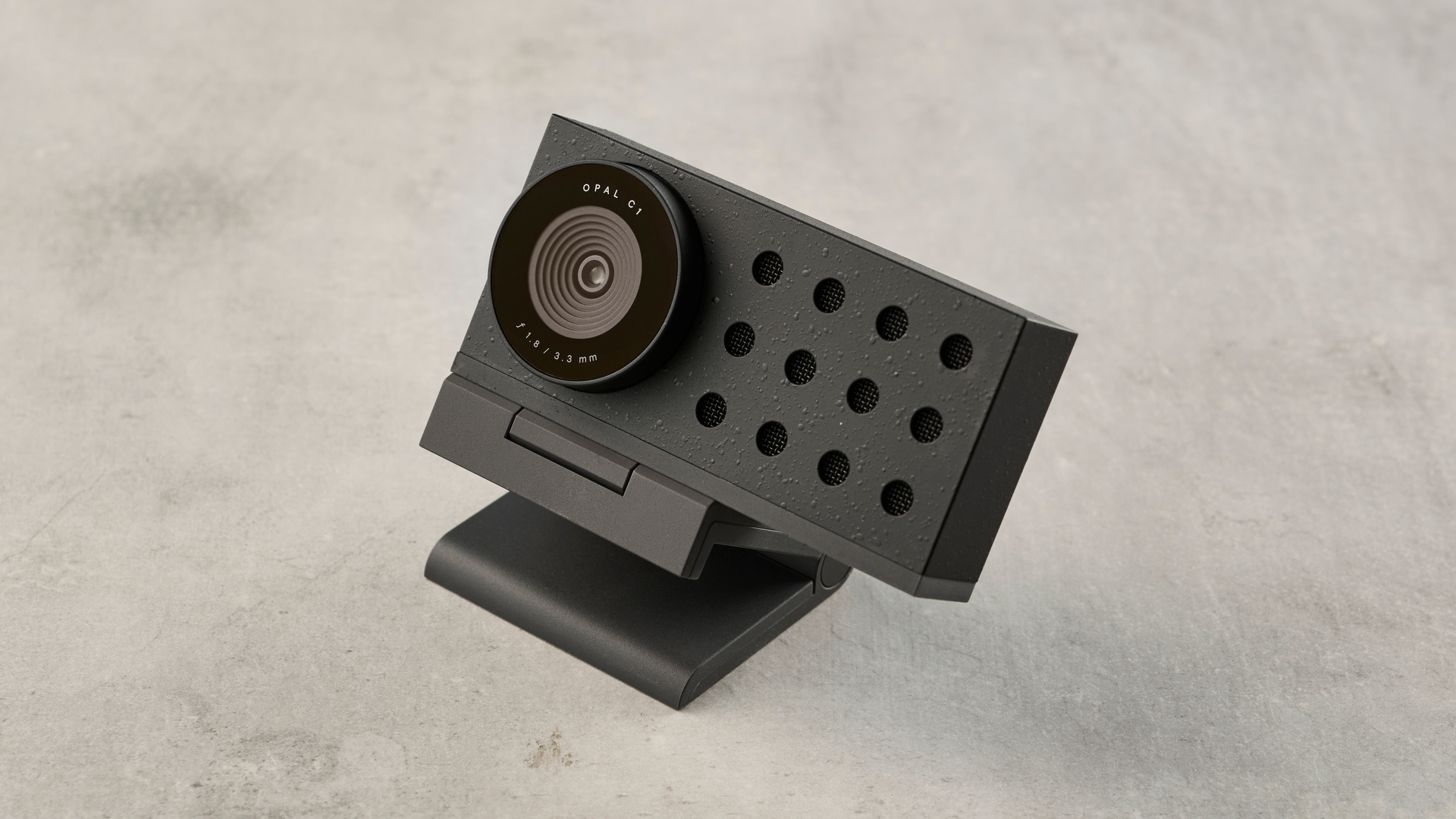
The C1 features an adjustable mount that attaches to the webcam’s base via a ⅜” thread, so you can mount the camera on a tripod if you want to. The mount is highly adjustable, meaning the C1 fits a wide array of monitors and positions, and it can be used as a stand if you want to position the camera on your desk.
The mount doesn’t clip on with any type of spring though, which means you’re essentially always wedging the camera into position — as such, I keep finding the C1 liable to falling off if I shake or move what it's clipped to. This has happened on all 3 laptops and both monitors I’ve been using for testing.
macOS oriented
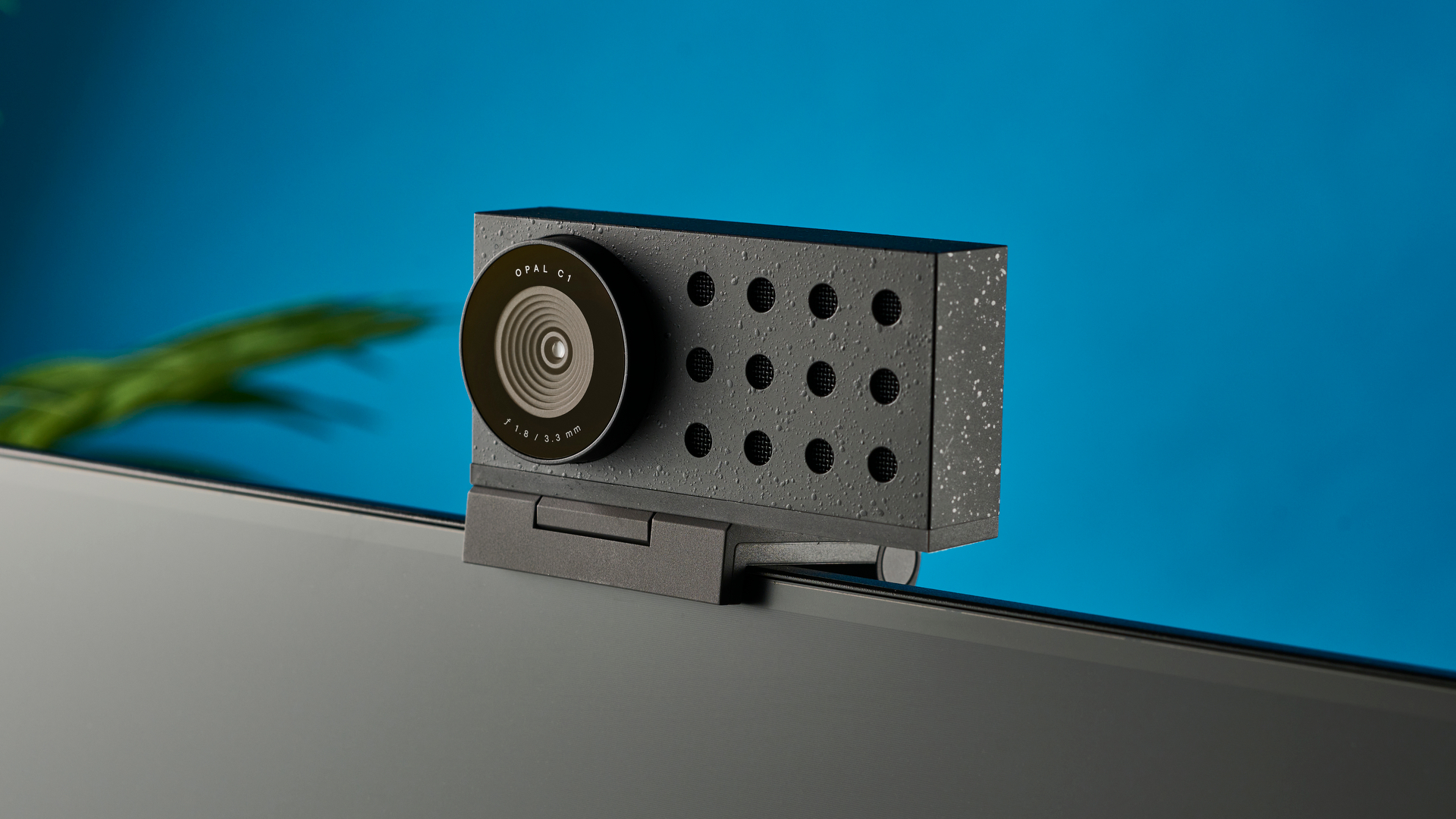
The Opal C1 does work on Windows, it’s just that you won’t have the best experience, as the webcam is geared towards macOS users. As I mentioned earlier, I’ve had issues connecting to Windows 11, whereas the experience on a Mac is seamless. Opal’s Composer app is also macOS-only, and this software appears to be the only way you can download firmware updates for the webcam.
This is not a major con (although the inability to download firmware on Windows really sucks), and I’m not opposed to platform-specific products by default. There are plenty of products which are designed to function at their best on one platform or operating system — Apple’s AirPods, for example — but such a platform orientation doesn’t necessarily make them bad products. However, it’s certainly a major buying consideration, and Windows users will want to steer clear of the C1 because of it. After all, are AirPods Pro 2 really the best investment of $249 if you’re an Android user.
Opal C1 review: Verdict
Unfortunately, I can’t recommend the Opal C1 webcam. Sure, its 4K image quality is great, but all that resolution is pointless if you’re barely ever in focus. For $299, I expect better than a webcam that needs an eye prescription and a new set of glasses.
It’s a shame, because this webcam looks great and comes with a really solid companion app that I’ve had a lot of fun using and which proves super useful. If you’re in the market for a premium webcam, I advise saving $100 and buying the Logitech MX Brio 4K instead. Or, if you’re laptop-only, look at Opal’s other webcam, the adorable little Tadpole. Sorry Opal, the C1 gets a C- from me.

Peter is Reviews Editor at Tom's Guide. As a writer, he covers topics including tech, photography, gaming, hardware, motoring and food & drink. Outside of work, he's an avid photographer, specialising in architectural and portrait photography. When he's not snapping away on his beloved Fujifilm camera, he can usually be found telling everyone about his greyhounds, riding his motorcycle, squeezing as many FPS as possible out of PC games, and perfecting his espresso shots.
